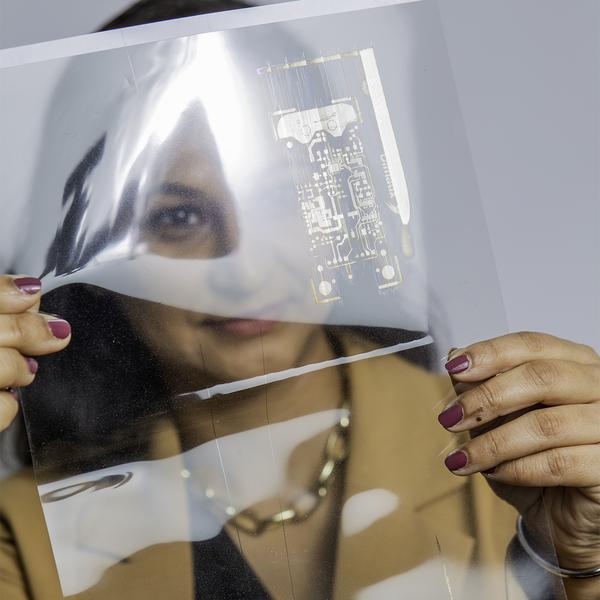Mar 30 2021
Researchers predict that next-generation electronics will be component-free, non-rigid, bendable, flexible and with the ability for simple integration into different objects.
 Assistant Professor Shweta Agarwala. Image Credit: Shweta Agarwala.
Assistant Professor Shweta Agarwala. Image Credit: Shweta Agarwala.
Direct-write printing methods offer a special chance to achieve this vision by using nanomaterials, the purported functional inks, which can be customized to add preferred functionalities on several flexible substrates, like plastic or textiles.
Dubbed Printed Electronics (PE), the technology has been well-known for several decades but has recently attracted significant attention as a result of the innovation in design revolution, process technology, and material inks.
Scientists from Aarhus University have currently published an extensive review of the technology in the renowned scientific journal Advanced Materials to maintain the research community better informed about the new technological developments in the area of droplet-based PE methods for next-generation devices.
Through this paper, we have tried to fill the existing void in literature by discussing techniques, material inks, ink properties, post processing, substrates and application to provide a complete guide. PE is an industry relevant technology and the gateway to future portable electronics, where advanced printers can print complex circuits on any material.
Shweta Agarwala, Assistant Professor and Expert in PE, Department of Electrical and Computer Engineering, Aarhus University
Already, PE is being utilized for various applications at present. It is an appealing technique to impart electrical functionality on any surface. The main advantage of PE is that it is readily scalable and economical.
PE offers a wide range of advantages over conventional lithography-based technologies. It provides much more production flexibility, it is cheaper and far simpler. More importantly, it opens up a plethora of new possibilities to print flexible electrical circuits directly onto a wide range of substrates such as plastics, papers, clothes, and quite literally any other planar and non-planar surfaces. The research area is moving forwards fast, and this publication provides an overview of how far we have progressed today.
Hamed Abdolmaleki, Study First Author and PhD Student, Aarhus University
Although PE is being utilized in a majority of industries and is regarded as highly crucial in future electronics, the technology is still in its early days.
The aspect of sustainability is very essential for Shweta Agarwala in terms of the future perspectives of electronics and PE technology:
PE is the way towards biodegradable electronics, and with this technology, we can address the huge societal problems that electronics already present, and which will only get more pressing in the future.
Shweta Agarwala, Assistant Professor and Expert in PE, Department of Electrical and Computer Engineering, Aarhus University
“The world is not only suffering from a huge amount of plastic pollution; it is also burdened by enormous pollution from electronics in all the devices we discard rapidly. In the review article, we have also discussed the emerging field of biodegradable substrates that will have huge environmental impact,” Agarwala added.
Journal Reference:
Abdolmaleki, H., et al. (2021) Droplet‐Based Techniques for Printing of Functional Inks for Flexible Physical Sensors. Advanced Materials. doi.org/10.1002/adma.202006792.